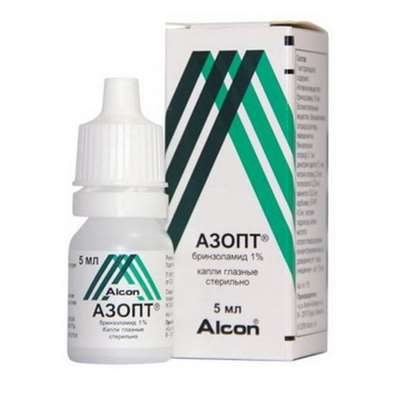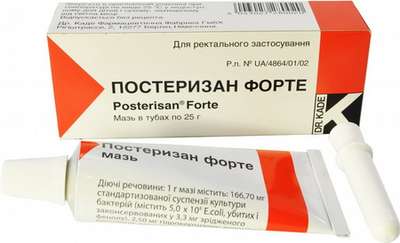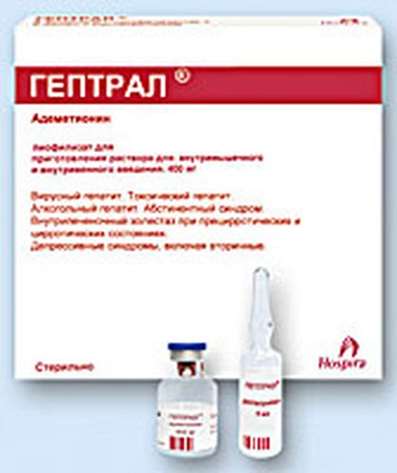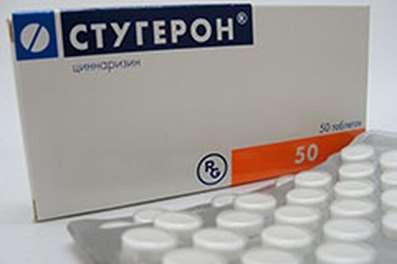Instruction for use: Azilect
I want this, give me price
Dosage form: tablets
Active substance: Rasagiline*
ATX
N04BD02 Rasagiline
Pharmacological groups:
Dopaminomimetics
An antiparkinsonian means - MAO inhibitor [Antiparkinsonian means]
The nosological classification (ICD-10)
G20 Parkinson's disease: A trembling paralysis; Idiopathic Parkinsonism; Parkinson's disease; Symptomatic Parkinsonism
Composition
Tablets - 1 table.
active substance: Rasagiline mesylate 1.56 mg
(Corresponding to 1 mg rasagiline base)
Auxiliary substances: mannitol - 159.24 mg; Silicon dioxide colloidal - 1.2 mg; Corn starch - 20 mg; Corn starch pregelatinized starch - 20 mg; Stearic acid - 4 mg; Talc - 4 mg
Description of dosage form
Tablets: white or almost white, round, flat-cylindrical, with a facet and an engraving "GIL 1" on one side.
Pharmachologic effect
Mode of action - antiparkinsonian, MAO-B inhibitory.
Pharmacodynamics
Razagilin is a selective irreversible inhibitor of MAO type B, an enzyme that determines 80% of the activity of MAO in the brain and the metabolism of dopamine. Razagilin is 30-80 times more active against MAO-B than to another type of this enzyme - MAO-A.
As a result of the inhibitory effect of the drug on MAO-B in the central nervous system, the level of dopamine is increased, the formation of toxic free radicals, the excessive formation of which is observed in patients with Parkinson's disease, decreases. Razagilin also has a neuroprotective effect.
Unlike indiscriminate MAO inhibitors, the drug in therapeutic doses does not block the metabolism of biogenic amines (for example, tyramine) coming from food, and therefore does not cause a tyramine-mediated hypertensive syndrome ("cheese effect").
Pharmacokinetics
Razagilin is rapidly absorbed after ingestion, its Cmax in blood plasma is reached after 0.5 h. The absolute bioavailability of the drug after a single administration is about 36%. Food does not affect Tmax rasagiline in the blood, however, when consuming fatty foods Cmax and AUC decrease by 60% and 20%, respectively. Pharmacokinetics of the drug is linear in the dose range of 0.5-2 mg. Binding to plasma proteins varies from 60 to 70%.
Rasagiline is almost completely metabolized in the liver. Biotransformation is carried out by N-dealkylation and / or hydroxylation to form the main biologically inactive metabolite - 1-aminoindane, as well as two other metabolites - 3-hydroxy-N-propargyl-1-aminoindane and 3-hydroxy-1-aminoindane. The drug is metabolized with the participation of the CYP1A2 isoenzyme of the cytochrome P450 system.
Razagiline is excreted mainly by the kidneys (more than 60%) and to a lesser extent through the intestine (more than 20%). Less than 1% of the dose administered is excreted unchanged. T1 / 2 is 0.6-2 hours.
The parameters of pharmacokinetics of rasagiline practically do not change in patients with mild and moderate renal insufficiency. With mild hepatic insufficiency, the values of AUC and Cmax parameters can increase by 80 and 38%, and in patients with moderate violations of liver function these parameters reach more than 500 and 80%, respectively.
Indications of the drug Azilect
Monotherapy or combination therapy for Parkinson's disease (with levodopa preparations).
Contraindications
Hypersensitivity to rasagiline or any of the components of the drug;
Simultaneous application with other MAO inhibitors (including drugs and food additives containing St. John's wort), pethidine. The break between the cancellation of rasagiline and the initiation of therapy with these drugs should be at least 14 days;
Hepatic insufficiency of moderate and severe degree (classes B and C on the Child-Pugh scale);
Children under 18 years of age (no data on efficacy and safety).
With caution: mild liver failure (class A on the Child-Pugh scale); Simultaneous application with SSRIs (including fluoxetine, fluvoxamine), SSRIs, tricyclic and tetracyclic antidepressants, potent inhibitors of the isoenzyme CYP1A2.
Application in pregnancy and breastfeeding
Data on the use of rasagiline in pregnant women are absent. The results of animal studies do not indicate the presence of direct or indirect undesirable effects on pregnancy, embryo-fetal development, childbirth and postnatal development. If it is necessary to use rasagiline in pregnant women, it is necessary to correlate the expected benefit to the mother and the risk to the fetus.
According to experimental data, rasagiline inhibits the secretion of prolactin and, thus, can suppress lactation. Information about the penetration of rasagiline in breast milk is absent.
If it is necessary to use rasagiline during breastfeeding, it is necessary to correlate the expected benefit to the mother and child.
Side effects
Overall, 1361 patients participated in the rasagiline clinical trial program, which was 3,076.4 patient-years. In double-blind, placebo-controlled trials, 529 patients took rasagiline at a dose of 1 mg / day, which was 212 patient-years, and 539 patients received placebo, which was 213 patient-years.
Monotherapy
The list below describes unwanted reactions reported with an increased incidence in placebo-controlled studies in patients who received 1 mg / day rasagiline (rasagiline group - n = 149, placebo group - n = 151).
Undesirable reactions with differences greater than 2% compared with the placebo group are indicated in italics. The frequency of unwanted reactions (% of patients) of rasagiline / placebo is indicated in parentheses.
Undesired reactions are distributed according to the following frequency: very often - ≥1 / 10; Often - ≥1 / 100 to <1/10; Infrequently - ≥1 / 1000 to <1/100; Rarely - ≥1 / 10000 to <1/1000%; Very rarely - <1/10000.
Infectious and parasitic diseases: often - flu (4.7 / 0.7%).
Benign, malignant and unspecified neoplasms (including cysts and polyps): often - skin cancer (1.3 / 0.7%).
On the part of the blood and lymphatic system: often - leukopenia (1.3 / 0%).
From the immune system: often - allergies (1.3 / 0.7%).
From the side of metabolism and nutrition: infrequently - a decrease in appetite (0.7 / 0%).
From the side of the psyche: often - depression (5.4 / 2%), hallucinations (1.3 / 0.7%).
From the nervous system: very often - headache (14,1 / 11,9%); Infrequently - a violation of cerebral circulation (0.7 / 0%).
From the side of the organ of vision: often - conjunctivitis (2.7 / 0.7%).
From the side of the hearing organ and labyrinthine disturbances: often - vertigo (2.7 / 1.3%).
From the heart: often - angina (1.3 / 0%); Infrequently, myocardial infarction (0.7% / 0%).
From the gastrointestinal tract: often - bloating (1,3 / 0%).
On the part of the respiratory system: often - rhinitis (3,4 / 0,7%).
From the skin and subcutaneous tissues: often - dermatitis (2/0%); Infrequently - a vesiculo-bullous rash (0,7 / 0%).
From the musculoskeletal and connective tissue: often - musculoskeletal pain (6.7 / 2.6%), neck pain (2.7 / 0%), arthritis (1.3 / 0.7%).
From the side of the kidneys and urinary tract: often - the urge to urinate (1.3 / 0.7%).
General violations and violations at the injection site: often - fever (2.7 / 1.3%), malaise (2/0%).
When used as an auxiliary therapy
The list below includes unwanted reactions reported with an increased incidence in placebo-controlled trials in patients receiving rasagiline 1 mg / day (rasagiline group - n = 380, placebo group - n = 388). The frequency of unwanted reactions (% of patients) of rasagiline / placebo is indicated in parentheses.
Undesired reactions are distributed according to the following frequency: very often - ≥1 / 10; Often - ≥1 / 100 to <1/10; Infrequently - ≥1 / 1000 to <1/100; Rarely - ≥1 / 10000 to <1/1000%; Very rarely - <1/10000 ..
Benign, malignant and unspecified neoplasms (including cysts and polyps): infrequently - skin melanoma (0.5 / 0.3%).
From the side of metabolism and nutrition: often - a decrease in appetite (2.4 / 0.8%).
From the side of the psyche: often - hallucinations (2.9 / 2.1%), nightmarish dreams (2.1 / 0.8%); Infrequently - confusion (0,8 / 0,5%).
From the nervous system: very often - dyskinesia (10.5 / 6.2%); Often - dystonia (2.4 / 0.8%), carpal tunnel syndrome (1.3 / 0%), imbalance (1.6 / 0.3%); Infrequently - impaired cerebral circulation (0.5 / 0.3%).
From the heart: infrequently - angina (0.5 / 0%).
From the side of the vessels: often - orthostatic hypotension (3.9 / 0.8%).
From the digestive system: often - abdominal pain (4.2 / 1.3%), constipation (4.2 / 2.1%), nausea and vomiting (8.4 / 6.2%), dry mouth (3.4 / 1.8%).
From the skin and subcutaneous tissues: often - a rash (1,1 / 0,3%).
From the musculoskeletal and connective tissue: often - arthralgia (2.4 / 2.1%), pain in the neck (1.3 / 0.5%).
Results of studies: often - weight loss (4.5 / 1.5%).
Injuries, poisoning and complications of procedures: often - falls (4.7 / 3.4%).
With Parkinson's disease, hallucinations and confusion arise. According to the post-experience experience, these symptoms were noted in patients with Parkinson's disease who received rasagiline.
Serious adverse reactions that occur with the simultaneous use of SSRIs, SSRIs, tricyclic / tetracyclic antidepressants and MAO inhibitors are well known. In the post-marketing period, cases of the development of serotonin syndrome, manifested in agitation, confusion, rigidity, fever and myoclonus, in patients taking antidepressants / SSRIs and rasagiline were reported.
In clinical studies of rasagiline, the simultaneous use of it with fluoxetine or fluvoxamine was not allowed. However, the following antidepressants were allowed in these doses: amitriptyline - not more than 50 mg / day, trazodone - not more than 100 mg / day, citalopram - not more than 20 mg / day, sertraline - not more than 100 mg / day and paroxetine - no more than 30 Mg / day. In a clinical trial in which rasagiline was simultaneously used with tricyclic antidepressants (115 patients) and SSRIs / SSRIs (141 patients), no cases of serotonin syndrome were noted.
When rasagiline was used during the postgrade period, there was a reported increase in blood pressure, including rare cases of hypertensive crises, in patients using an unlimited number of products rich in tyramine in the diet.
There are cases of drug interaction with the simultaneous use of MAO inhibitors with sympathomimetic drugs.
In the post-marketing period, a case of increased blood pressure was reported in a patient who used an ophthalmic vasoconstrictor tetrahydrozoline and simultaneously received rasagiline treatment.
Impulsive personality disorder. There have been reports of increased libido, hypersexuality, gambling, compulsive need to buy or acquire, overeating and compulsive overeating in patients treated with dopamine receptor agonists and / or other dopaminomimetics. A similar pattern of impulsive personality disorder was observed in the post-marketing period in patients taking rasagiline, which was characterized by compulsive and impulsive behavior, obsessive ideas.
Interaction
Simultaneous use of rasagiline with other MAO inhibitors, incl. With medicinal preparations and food additives containing St. John's wort, is contraindicated, since There is a risk of developing a severe hypertensive crisis due to nonselective MAO inhibition.
The development of serious adverse reactions with the simultaneous use of pethidine and MAO inhibitors has been reported, among others. Selective MAO-B inhibitors. The simultaneous use of rasagiline and pethidine is contraindicated.
It was reported on the interaction of MAO inhibitors and sympathomimetic drugs with their simultaneous application. Due to the rasagiline property of MAO inhibition, the simultaneous use of rasagiline with sympathomimetics, such as decongestants or complex anti-cold medications for oral or nasal administration, containing ephedrine or pseudoephedrine, is not recommended.
It was reported on the interaction of dextromethorphan and indiscriminate MAO inhibitors during their simultaneous application. Due to the rasagiline property of MAO inhibition, the simultaneous use of rasagiline with dextromethorphan and the combination drugs containing it is not recommended.
It should avoid the simultaneous use of rasagiline with fluoxetine or fluvoxamine. The break between the cancellation of rasagiline and the initiation of therapy with these drugs should be at least 14 days. After discontinuing treatment with fluoxetine or fluvoxamine (prolonged T1 / 2) and starting treatment with rasagiline should be at least 5 weeks.
Information on the simultaneous use of SSRIs / SSRIs and rasagiline in clinical trials is presented in the "Side effects" section. The development of serious adverse reactions with the simultaneous use of SSRIs, SSRIs, tricyclics and tetracyclic antidepressants with MAO inhibitors has been reported. In connection with the property of rasagiline to inhibit MAO, care must be taken when it is used simultaneously with SSRIs, SSRIs, tricyclics and tetracyclic antidepressants.
In patients with Parkinson's disease, long-term receiving levodopa, as an auxiliary therapy, levodopa had no significant effect on rasagiline clearance.
In vitro studies have shown that the main enzyme involved in the metabolism of rasagiline is the isoenzyme CYP1A2. Simultaneous use of ciprofloxacin and rasagiline increases the AUC of the latter by 83%. The simultaneous use of rasagiline and theophylline (the substrate of the isoenzyme CYP1A2) did not affect the pharmacokinetics of any of them. Thus, potent inhibitors of the CYP1A2 isoenzyme may alter the plasma concentration of rasagiline and require careful simultaneous application. There is a risk that, due to the induction of the isoenzyme CYP1A2 in smoking patients, the concentration of rasagiline in the blood plasma may decrease.
In vitro studies have shown that rasagiline at a concentration of 1 μg / ml (equivalent to a concentration 160 times greater than the mean Cmax (5.9-8.5 ng / ml) after repeated administration of 1 mg rasagiline in patients with Parkinson's disease) does not inhibit isoenzymes CYP1A2, CYP2A6, CYP2C9, CYP2C19, CYP2D6, CYP2E1, CYP3A4 and CYP4A. This indicates that the therapeutic concentrations of rasagiline are most likely not affected by the clinically significant effect of the substrates of these isoenzymes.
With simultaneous application of entacapone with rasagiline, the clearance of the latter increased by 28%.
Clinical studies of the interaction of tyramine and rasagiline in volunteers and patients with Parkinson's disease (0.5-1 mg / day rasagiline or placebo as adjunctive therapy for levodopa for 6 months without restriction of tyramine intake) have shown that some interaction of rasagiline and tyramine Is absent, and rasagiline can safely be used without restriction of tyramine in the diet.
Dosing and Administration
Inside, regardless of food intake, at a dose of 1 mg 1 time per day, either with monotherapy or in combination with levodopa.
Elderly patients
Correction of dose in elderly patients is not required.
Patients with impaired hepatic function
The use of rasagiline in patients with moderate or severe hepatic insufficiency is contraindicated.
Care should be taken when using rasagiline in patients with mild hepatic insufficiency. If the progress of treatment with rasagiline is marked by the progression of hepatic insufficiency to an average degree, the drug should be discontinued.
Patients with renal insufficiency
Correction of the dose is not required.
Overdose
Symptoms of drug overdose are similar to those in overdose with indiscriminate MAO inhibitors (including arterial hypertension, postural hypotension).
Treatment: there is no specific antidote. Gastric lavage, reception of activated charcoal, symptomatic therapy.
Special instructions
Avoid simultaneous use of the drug Azilect and fluoxetine or fluvoxamine (see "Interaction"). The interval between the abolition of fluoxetine and the beginning of treatment with Azilect should be 5 weeks, and between cancellation of Azilect and the start of fluoxetine or fluvoxamine - 14 days.
Cases of impulsive personality disorder have been reported in patients treated with dopamine receptor agonists and / or other dopaminomimetics. The same disorders were observed in the post-marketing period in patients taking the drug Azilect (see "Side effects"). It is necessary to observe patients, in connection with the possibility of developing an impulsive personality disorder. Patients and carers should be informed of the potential for behavioral disorders in patients taking Azilect, including compulsive behavior, obsessions, gambling, increased libido, hypersexuality, impulsive behavior, and compulsive needs to buy or purchase.
The simultaneous use of Azilect with dextromethorphan, sympathomimetics or complex anti-cold medications for oral or nasal administration containing ephedrine or pseudoephedrine is not recommended (see "Interaction"). There is evidence that Parkinson's disease, rather than the use of any medication, incl. Drug Azilect, is a risk factor for the development of skin cancer, in particular melanoma (see "Side effects"). It is necessary to warn the patient about the need to consult a doctor if any pathological changes in the skin appear.
It should be borne in mind that such symptoms as hallucinations and confusion that appear on the background of Azilect treatment can be considered both as a manifestation of Parkinson's disease and as undesirable reactions of Azilect (see "Side effects").
It is necessary to use with caution the drug Azilect in patients with mild hepatic insufficiency. The use of Azilect in patients with moderate impairment of liver function is not recommended. In the case of a change in the severity of liver failure from mild to moderate use of the drug, Azilect must be discontinued (see "Pharmacokinetics").
Influence on the ability to drive vehicles and work with techniques that require increased concentration. The study of the influence of rasagiline on driving and the management of other mechanisms was not carried out.
However, given the possibility of significant side effects from the central nervous system, during the treatment with Azilect, patients should be informed of the need to exercise caution when driving vehicles and engaging in potentially dangerous activities that require a high concentration of attention and speed of psychomotor reactions until they are sure, That the drug does not have a negative effect.
Release form
Tablets, 1 mg. For 10 tab. In the blister pack. By 1, 3 or 10 bl. In a cardboard box.
Manufacturer
Teva Pharmaceutical Enterprises Ltd., Israel.
Terms of leave from pharmacies
On prescription.
NPS-RU-00013-DOK-PHARM-23072016
Storage conditions of the drug Azilect
At a temperature not higher than 25 ° C.
Keep out of the reach of children.
Shelf life of Azilect
3 years.
Do not use after the expiry date printed on the package.

 Cart
Cart





